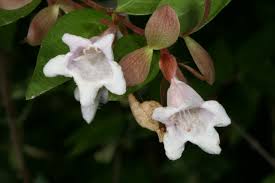Colouring your winter garden
Keith Mundy
During the cooler months of the year leading into spring our gardens can become somewhat drab and uninteresting. Consideration to adding some colour to the garden not only makes the garden look great, but lifts our spirits on the cold damp months of winter. Colour can be added by the use of flowering plants or by plants that retain their leaves and have a colour other than green.
Start with annuals that can be either planted in pots or in the ground, these give instant colour and will last until the warmer weather arrives when we plant summer annuals that can stand the warmer temperatures. Pansies, viola, primula, snapdragons and poppies are but a few that come to mind. Planted in a full sun position with a compost enriched soil and fed with a liquid fertiliser they are a simple and inexpensive way to brighten up your day.
For a more permanent display try using perennials. One important factor to remember with perennials is that even though they do well in the full sun during winter, some might need to be planted under deciduous trees to give them protection from summer sun.
Many perennials add colour by either flower or foliage and the foliage forms can vary from deep purple to yellow and various shades of variegation. One of my favourites are the amazing Hellebore. These beautiful plants range in colour from white to pink and purple with varieties being single or double. Other plants to be considered are Polemoniums for their variegated foliage, Penstemon Huskers Red for its scarlet foliage and Heuchera for their interesting range of foliage colours.
If annuals and perennials don’t take your fancy then consider shrubs that have either a variegated or coloured foliage. Many variegated foliaged plants add another interesting dimension to your garden as their standout beauty in winter is highlighted by the fact that many other plants nearby have lost their leaves.
Abelia, a small shrub suited to either hedging or as a single specimen plant is a great addition to any garden. Two lovely forms are available at the moment, one with a green and silver variegation and the other green and gold. These two will take part shade or full sun. Other variegated plants include Euonymous, Aucuba and Metrosideros (NZ Christmas bush for the coastal garden).
The last but not least, are single coloured foliage plants that have standout beauty in their foliage but also the added bonus of flowers. Loropetalum with its burgundy foliage and pink flowers is a beauty. There is also a white flowering form with green foliage and both can be hedged or used as a single garden specimen. Teucrium with its silver foliage and purple flowers is a good one for a coastal garden.
One shouldn’t forget the amazing assortment of Australian native plants that winter flower including Philotheca (Eriostemon) varieties of Grevillea, Callistemon and Leptospermum just to name a few.
Moving along to tasks in the garden as a follow up to last months’ advice, July is a great time to finish off the winter pruning of fruit trees, roses and perennials. Perennials can be mulched with some straw to protect any new shoots that might try and get an early start before the real cold weather is over. Complete winter spraying of fruit trees and roses with a winter oil and fungicide.
Finally, for this month remember that plants still need water even in winter. It doesn’t have to happen as much as in the drier warmer months but it still must happen, particularly pots.


